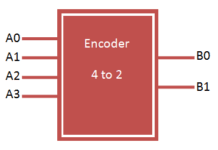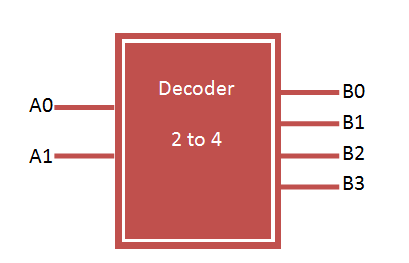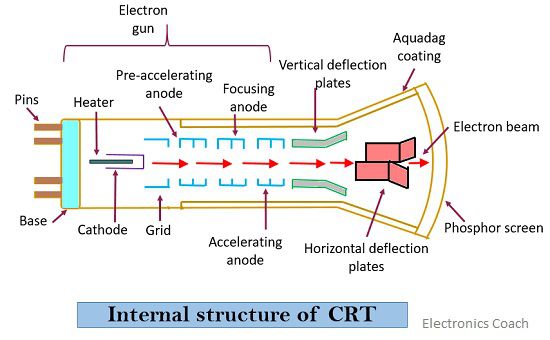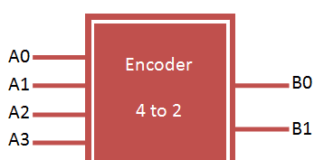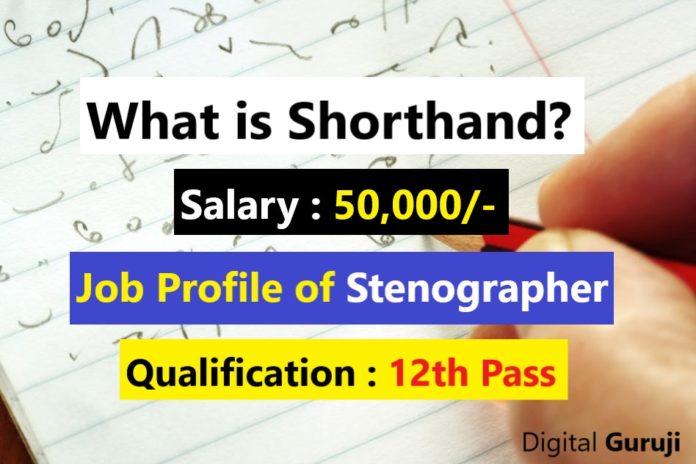
In India if one knows Shorthand at 80/100wpm, then one can apply for Stenographer in many Government Departments, viz.,
- Staff Selection Commission which conducts all vacancies of Ministries and there subordinate Departments
- Parliament of India (Lok Sabha and Rajya Sabha) for Reporter (Class I Officder) and Stenographer
- Supreme Court and High Courts/District Courts
- Department of Atomic Energy/ NPCIL/BARC
- NCDC many other autonomous department
You can also go in private sector and also with you skill can join any Law Firm. Because Shorthand is very much in demand in Law First and good income can be generated from this sector also.
More haste, less speed?
- An average person can write longhand at a rate of between 25 – 45 wpm. Some people are quick writers and some are slow writers.
- By learning shorthand, you will be able to reduce what you have written into a completely different language, so that high speeds of writing are possible. Good shorthand will be able to write at speeds in excess of 80 wpm and beyond. This means that a stenographer can easily take down dictation and continuous spoken matter for long duration, without suffering any fatigue in their writing.
- It takes almost a year to have a speed of 80-100 wpm with minimum of 4–5 hours daily practice. You will be proficient only when you will be able to write without thinking as same as you write without thinking in the script of English or Hindi.
- Learning Stenography takes time, and regular practice, but don’t worry it is not the difficult task it is only a script which runs only on the rules and the mind of the writer.
Responsibilities of a Stenographer in various Government Departments
Speech Writing:
Mainly, a Stenographer has to write the official speeches & declaration for the senior officers of the department.
Press Conference Briefings:
A stenographer is asked to attend the press conferences along with a Minister or a Senior Officer so that he/she can record the statements of the persons in the conference. A stenographer needs to help its department in making and issuing a press release on the same subject matter discussed in the conference.
Assisting the Minister or Officer:
A stenographer needs to help its department in making and issuing a press release on the same subject matter discussed in the conference. A stenographer assigned to a particular officer or a minister needs to assist him/her in writing speeches and declarations for the Ministry Offices. Most of the time, stenographers have good knowledge on these matters more than anybody else due to their constant involvement in the proceedings.
Helping in Public Relations:
Another important role of a stenographer is to make notes on a daily basis. These notes are about various governmental departments and their stands on issues. This information needs to reach the public. So, the Public Relations Officer of a government department is benefited the most by the stenographer because these officers require information to be disseminated to the public on a regular basis.
Brief History of Shorthand
LANGUAGE is broadly used in two forms – written and oral (phonetic). Whereas a beautiful language-script is essential for its written form, a relatively easy, short and facile script (shorthand) is necessary for speedy transmission of thoughts. Shorthand, that is to say, the script which aims at the maximum speed in the transmission of thought is, in a sense, the last stage of the history of writing.
Writing is not an end in itself. We need systems of writing not only as beautiful or fine as possible, but as well fitted to the purpose for which they are required. When constructing any system or Theory of Shorthand, speed must be the supreme guide and accuracy the valid test.
Origin of Shorthand
Shorthand is, by no means, a modern invention, nor is reporting of Parliamentary Debates peculiar to the modern age. The origin and development of Shorthand lies buried in antiquity. Shorthand has been variously known as Tachygraphy (quick writing); Brachygraphy (short writing); Zeiglography; Semography; Stenography or Shorthand (narrow writing) and hundreds of Shorthand systems have been experimented and used since time immemorial.
Utility of Shorthand
The utility of Shorthand is not new to human history. It has been used for various purposes since its beginning. Notarii (Reporters) reported the speeches of Roman Senators. Shorthand was used to write the sermons of religious leaders of the Church. It was used for notations (marginal notes) in public documents to protect them against forgery. Samuel Papys recorded his diary in Shorthand. George Bernard Shaw wrote all his literature in Shorthand. Famous Novelist Charles Dickens was a Shorthand Reporter first. Shakespeare’s plays were all preserved by means of Shorthand. Julius Caesar (the King) is also known to have written in Shorthand. References in Kalidas’s works to scribes and oliezuthalers (sound writers) in the works of Tamil authors, indicate that Shorthand writing was prevalent in ancient India.
The mythological story of writing Mahabharata by Lord Ganesha taking dictation from Vyasa also indicates a system of Shorthand writing in ancient India. In Mughal period Qatibs (reporters) were appointed to take down Shahi Fermans (orders of the king).
Its importance has been recognized by scholars, linguists, phoneticians and political leaders. Shorthand writers have become indispensable in the present day world and no technological or scientific advancement can replace Shorthand writers since it requires intelligence, understanding and discretion which cannot be expected from a machine.
Development of Modern Shorthand
Pitman System
The modern system of Shorthand writing is the product of phonetics which received considerable attention in England from Renaissance period and the general stimulus to phonetic studies from the discovery of Indian phonetic work towards the end of the 18th Century. In 1786, Sir William Jone, a British Judge in Calcutta, read his famous paper to the Royal Asiatic Society, wherein he established beyond doubt the historical kinship of Sanskrit (classical language of India) with Latin, Greek and German language. William Jone’s phonetic work was studied carefully in English by A.J. Ellis who corroborated with Sir Issac Pitman on alphabetic reform, setting out the possible vowel and consonant sound-types, classified by their articulation represented by distinctive symbols and illustrated from a number of different languages.
Sir Issac Pitman published his Stenographic Soundhand in 1837 which was later called Phonography or the Pitman’s Shorthand. Till the advent of Pitman’s phonetic system, nearly 460 systems of English Shorthand writing had been tried in England alone without much success. Thus, Pitman’s Shorthand, which was developed 150 years ago, on the phonetic structure of Sanskrit, is continuing even today. The peculiarity of this system was that the vowels were disjoined from the consonantal strokes (characters) unlike other old systems. Majority of the world languages follow or adopt the phonetic structure of Shorthand, with modifications to suit their requirements.
Sloan-Duployan System
After the widespread use of Pitman’s system, efforts continued for simpler systems of Shorthand throughout the world. In 1884, Mr. J.M. Sloan of the institute of Stenographic de Delux Mondes of Paris brought out an adaptation to English of the French system of Duploye. It was later called the Sloan-Duployan System. The distinguishing feature of this system was that unlike Pitman’s System, vowels were joined to the consonants (strokes). This system was also adopted by many languages in India in the beginning when Shorthand systems were developed in Indian languages.
Gregg System
After studying so many systems of English Shorthand Dr. John Robert Gregg, published his system of Shorthand in 1888 based on the longhand slope (portions of longhand letters). This system became popular in the United States. The special feature of this system was that there were no thick and thin strokes and there was no position writing. This system is not popular in India because of its peculiar longhand Roman style, contrary to the writing systems in Indian languages.
There are yet many systems of Shorthand writing in the world languages, but very little is known about their origin, authors etc. as these systems could not make any impact on the writers or learners of Shorthand.
Thus, it can be said that broadly three Shorthand systems are popular in the world, viz., Pitman, Sloan-Duployan and Gregg of which the commonly used system in India is Pitman and its improved versions. (For detailed study read A Linguistic Study of Stenography, by Dr. G.D. Bist, published in Hindi with the financial assistance of Min. of H.R.D., Deptt. Of Education).
Entry of Modern Shorthand into India
Pitman’s Shorthand entered India towards the close of the 19th Century nearly hundred years ago. After its successful use in trade and commerce, its utility was gradually established in the fields of administration and judiciary.
The first batch of Indian youths was trained by Mr. Luker, is Pitman Shorthand, in 1884 at Madras. Later, the Trustees of Pachayyappa’s College started a Commercial School in 1886 under the charge of Mr. K.S. Ayyar, known as the father of commerce education in India. He organized several lecture tours, assisted by his two followers for noting down his speeches and reading back to the audience, thus convincing people about the utility and advantage of Shorthand in saving time and energy.
In 1887, when the Indian National Congress met at Madras, Sir Ayyar prevailed upon the organizers of the Congress to engage the services of his Assistants, himself taking the responsibility for the accuracy of their reports, thus winning laurels at the hands of the A.I.C.C. authorities and the public.
Use of Shorthand in Legislature
The first official for recording the Proceedings of the Governor General’s Council was appointed in 1890, Mr. W. Latimer, A.P.S. to Viceroy, did the work of verbatim reporting. Later on, Mr. Teasdale was appointed as a whole-time Reporters, who managed the heavy load of reporting work singly for a long time and was, therefore, called the father of Parliamentary Reporting in India.
The Minto-Morley Reforms of 1909 resulted in the constitution of an enlarged body called the Imperial Legislative Council which consisted of elected Members and their speeches attracted country-wide attention. Elaborate arrangements for reporting its Proceedings became necessary and six high speed Shorthand writers working in various Government offices were drafted for reporting duty, whenever the Council was in Session.
In course of time, sittings of the Council took longer hours and reporting work consequently became still heavier to shoulder. Thus eight full-time Reporters were appointed for the purpose who were called the Officers of the First Grade. Montford Reforms resulted in the creation of a bicameral legislature and each House was allowed to have its own Reporting staff. Till 1929, there was a common corps of 12 reporters.
After the separation of Legislature, their number was distributed, and their strength increased gradually. Thus Shorthand established a close bearing upon the correct publication of the Proceedings of the Legislature.
Use of Indian Languages in the Legislature
English being the Official Language of the British Indian Government, the Proceedings of the Council were held in English only. If any Indian Member spoke in his mother tongue, the mere fact of his having spoken in that language was noted down in the Proceedings. However, if the Member concerned supplied the English translation of his speech, it was included in the Debates.
After Independence, with the establishment of a National Government at the Centre, in 1984, for the first time four Hindi Reporters were appointed to report the Proceedings in Hindi.
Under the Indian Constitution, when Hindi became the link (national) language of India and all the Indian Languages became the official languages of the respective States, the Proceedings of the State Legislatures started in their respective official languages alongwith English. With this, bilingual or trilingual functioning of the Indian legislatures has become necessary and consequently the reporting work of the legislature has assumed difficult and complicated proportions for which a close coordination of English and Indian language Reporters is very necessary.
It has become essential for Reporters to acquire the working knowledge of English and the respective official language with which they are concerned. However, for want of proper training, literature and guidance, efficient Stenographers and Reporters are not available in the country.
The Objective
India is a multi-lingual country where bilingual/trilingual functioning is imperative. Therefore, to overcome the shortage of efficient English Stenographers and Reporters to enable them to acquire bilingual efficiency in Indian languages easily, it has become imperative for Stenographers in Government and Public Sectors to add to their knowledge the advances made in the field of Stenography. The present work will achieve these objectives.
This book is the product of the Author’s long outstanding research and experimentation in the field of Stenography; combined with his wide experience of reporting the Proceedings of both Houses of Parliament for 3 decades including teaching of Stenography; organizing Short-term Training-cum-Refresher Courses and Workshops for Stenography Teachers and Lecturers throughout the country. All the deficiencies of Pitman’s system including its redundancies, ambiguities, have been removed it this book. A new Chapter Scheme with logical and definite rules has been adopted, supplementing the phonetic strokes for writing proper nouns to enable Stenos and Reporters to attain bilingual competence in English and Indian languages.
A Practical Workbook for Shorthand writing has been prepared for the first time for proper guidance of learners to make learning easy, interesting and accurate from the very beginning, without which Stenography teaching is meaningless. The Workbook has been so designed so as to test the student’s progress in every chapter with corrective instructions and methods. The Practical Workbook gives enough Practice and Test Exercises on each chapter with Shorthand script (outlines), to test the knowledge, skill and understanding of the learners.
More than 124 Test Exercises with script of the Workbook on Dictation, Personal, Business and Official Correspondence (Letter-writing) in different styles (formats) on varied matters will help students acquire the necessary knowledge and understanding of letter-writing skills which is the main job of a Stenographer/P.A/P.S Correspondence has been given due weightage in the C.B.S.E. Examinations in all subjects in vocational stream viz. English, Office Practice, Typewriting & Shorthand. In fact, letter-writing is given more importance than speed writing in business organizations, private enterprises or multi-national companies, in recruitment of Stenos or Secretaries.
It is hoped that this book alongwith the help-books/aids will give a new fillip to the Teachers, Instructors, Students and High Speed Writers of Shorthand and will make their task easier.
Shorthand writing equipments
The following equipment /material is required for a learner/writer of Shorthand.
Table & Chair
The writing table should be approximately 75 centimeters high and the chair around 45 centimeters high so that the writer can sit comfortably while writing. This height may vary with the height of the Shorthand writer.
Note Book
A standard Shorthand notebook containing about 100 leaves or 200 pages is an ideal notebook for Shorthand writing. A rubber band around the used leaves will make easy opening of the book. The students should learn the method of turning pages with the left hand gradually so that the right hand is not disturbed while writing. The movement of the page with left hand should be line by line as these are written. (See details in Simple Speed Guide).
Pencil/Pen
In the beginning a neat style of writing with a Shorthand pencil should be adopted so that the thick and thin outlines are clearly visible. With the acquaintance of strokes/outlines, a Shorthand Pen with a fine and flexible nib can be used for flowy writing.
Pen or pencil should be held lightly between fingers of the right hand so as to permit facile writing. The middle of the fore-arm should rest on the edge of the desk so that free movement of the wrist of the right hand is allowed. The writer should keep his/her notebook parallel to the edge of the table, pressed firmly by the left hand fingers.
Stop Watch or Wrist Watch
The dictator should have a Stop Watch or a Wrist Watch with seconds bar so that the dictation speed is regulated properly by checking at every quarter of a minute which is marked in the dictation passage. The dictation should be given loudly so that there is no element of mishearing by the students.
Computer/Typewriter
Now Computers, replacing typewriters, has eased the fatigue of Stenographers for proper transcription of Shorthand notes. Erasing/correction is done by Delete or back-space key.
Dictation CDs/CD Player
The latest electronic device for Dictation recording and writing is done through digital recorder or mobile phone. Selected speeches of Debates on every topic from both Houses of Parliament are available in Audio CDs at required speeds with proper instructions for Shorthand learners.
An Ideal Shorthand Teacher
Shorthand is a visual representation of the language and not a collection of rules and gimmicks. Therefore, what the Teacher knows is very important and what he is, is more important. His personality and influence counts much to govern the student.
The student’s ability to write Shorthand has to be measured by his ability to read it. Shorthand writing has no meaning if it cannot be read back correctly. The student should not feel shy in the classroom if he is not able to read his notes quickly. He should be encouraged to develop confidence in himself and benefit from his criticism. Everything dictated should be read back which can be done only if the student is encouraged to develop the habit of reading Shorthand regularly.
The Teacher should elicit answers to questions put by him and should expect questions from students to be answered by him to find out whether the students have done their home work fully. Students should not be cursed for their failure but should be advised to cooperate with the Teacher. Dullness should never appear in the course of teaching.
The principles of Shorthand should be explained in English and to make students understand clearly, the help of the colloquial (local) language can also be taken, Transcription must be insisted from the beginning to acquire thorough knowledge of outlines. Weekly tests should be conducted and the areas of mistakes, i.e. spelling, grammatical, full stop, punctuation etc. must be pointed out to the students, for improvement. Quality not quantity should be the watchword of the Teachers.
The Teacher should be punctual and should have a tremendous enthusiasm for his profession and real love for his students. He should be a guide and philosopher to the weak students and a source of inspiration to the gifted ones. Ultimately a Teacher of Shorthand is judged by the actual (practical) performance of his/her students.
The Teacher should make use of all the material available on the subject. A good teacher is always a student and tries to give to his students up-to-date knowledge on the subject. The Teacher should be a good motivator, on the basis of which alone, learning of the art becomes a highly interesting cooperative effort of the teacher and the taught. He should try to modernize the method of teaching form the beginning. This will minimize the drop-outs from the class. The teaching should not only be instructive and interesting but also educative in itself.
Dictation is the heart of Shorthand teaching. Naturalness sincerity and ease are helpful to the students. Dictation should be given from a standing position.
Reading from Shorthand script trains the eye to decipher, the brain to read fast with understanding and the hand to accept the words at the wanted speed. If the brain is not trained by reading to digest and grasp the words 20 to 30 words per minute ahead of the wanted speed, the hand automatically stops writing on account of the brain taking time to accept words at the speed to which it is not accustomed. The eye creates hesitation and becomes a hindrance to hand movement when an outline is written wrong. Therefore, it is essential to train the three simultaneously to get the shortest possible-time results.
Francis Becon has said:
“Every man is a debtor to his profession. It is unfair for anybody to ignore one’s profession to get its due status”
Also Read : VHDL Code for 4 to 2 Encoder



